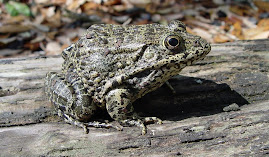
(The following is information from a U.S. Fish and Wildlife Service press release issued 26 July 2011. The press release in its entirety can be found here.)
In a press release issued today, the U.S. Fish and Wildlife Service announced that gopher tortoises east of Mobile Bay will be added to the list of candidate species eligible for Endangered Species Act (ESA) protection. While candidate species receive no statutory protection under the ESA, inclusion on the candidate list promotes cooperative conservation efforts for these species.
"After careful review, we have determined the gopher tortoise east of Mobile Bay is facing many of the same problems and challenges as the western population, which is already listed as threatened," said Cynthia Dohner, Southeast Regional Director for the U.S. Fish and Wildlife Service. "We hope increased protection and conservation efforts in the next few years by private landowners and state and federal agencies in Alabama Florida, Georgia, Louisiana, Mississippi and South Carolina can reduce those threats."
In making this determination, the Service completed a comprehensive review – known as a 12-month finding – and found sufficient scientific and commercial data to propose listing the species as threatened or endangered throughout its range. However, the Service is precluded from beginning work immediately on a listing proposal because its limited resources must be devoted to other, higher priority actions.
...
The eastern portion of the gopher tortoise’s range includes Alabama (east of the Tombigbee and Mobile Rivers), Florida, Georgia, and southern South Carolina. In these areas, the gopher tortoise will become a candidate species for listing under the ESA. In the western range states, west of the Tombigbee River in Alabama, Mississippi, and Louisiana, it will continue to be listed as threatened under the ESA.
Threats to the gopher tortoise include habitat loss, fragmentation and degradation, predation, inadequacy of regulatory mechanisms, and incompatible use of herbicides in forest management.
(For more information on the Gopher Tortoise - one of the South's iconic reptile species - see information from the Alabama Department of Conservation and Natural Resources and the Gopher Tortoise Council.)
In a press release issued today, the U.S. Fish and Wildlife Service announced that gopher tortoises east of Mobile Bay will be added to the list of candidate species eligible for Endangered Species Act (ESA) protection. While candidate species receive no statutory protection under the ESA, inclusion on the candidate list promotes cooperative conservation efforts for these species.
"After careful review, we have determined the gopher tortoise east of Mobile Bay is facing many of the same problems and challenges as the western population, which is already listed as threatened," said Cynthia Dohner, Southeast Regional Director for the U.S. Fish and Wildlife Service. "We hope increased protection and conservation efforts in the next few years by private landowners and state and federal agencies in Alabama Florida, Georgia, Louisiana, Mississippi and South Carolina can reduce those threats."
In making this determination, the Service completed a comprehensive review – known as a 12-month finding – and found sufficient scientific and commercial data to propose listing the species as threatened or endangered throughout its range. However, the Service is precluded from beginning work immediately on a listing proposal because its limited resources must be devoted to other, higher priority actions.
...
The eastern portion of the gopher tortoise’s range includes Alabama (east of the Tombigbee and Mobile Rivers), Florida, Georgia, and southern South Carolina. In these areas, the gopher tortoise will become a candidate species for listing under the ESA. In the western range states, west of the Tombigbee River in Alabama, Mississippi, and Louisiana, it will continue to be listed as threatened under the ESA.
Threats to the gopher tortoise include habitat loss, fragmentation and degradation, predation, inadequacy of regulatory mechanisms, and incompatible use of herbicides in forest management.
(For more information on the Gopher Tortoise - one of the South's iconic reptile species - see information from the Alabama Department of Conservation and Natural Resources and the Gopher Tortoise Council.)








No comments:
Post a Comment